
Connecting Through Seeing, Knowing, and Learning:The Unchanging Island and the Coral Reefs We Must Change

前田 一樹
Kazuki Maeda
Taketomi [Okinawa]
Kazuki Maeda
Born in Shizuoka City, Shizuoka Prefecture, Kazuki moved to the main island of Okinawa at the same time he entered elementary school. His father started a business on Kohama Island in the Yaeyama Islands, which led Kazuki to frequently visit the island, deepening his interest in the sea while playing. He began sailing competitions in his third year of elementary school. After attending Tokai University's School of Marine Science and Technology in Shizuoka and then living in Yokohama for work, he moved to Kohama Island to take over his father's business. Currently, as the site manager of Sea Technico Corporation, he is focused on coral reef conservation activities through marine activities.
Kohama Island, located about 400km south of Okinawa's main island in the center of the Yaeyama Islands, served as the setting for a TV drama. The island is situated in the rare and valuable coral reef area known as the Sekisei Lagoon. Sea Technico Corporation offers marine activities for tourists on this island, with Maeda Kazuki managing the site and dedicating efforts to preserving the world-renowned coral reefs. He also shares the unchanged allure of the island that has remained the same for decades. We asked what drives Maeda towards the sea and the island.
The Encounter with Kohama Island,
Eventually Captivating the Boy with the Sea
“Today’s weather on Kohama Island is unusually stormy, with 5m high waves and wind speeds of 20m and the pressure is winter type. The high-speed boat from Ishigaki Island, which is rarely canceled except for typhoons, is not running. Plus, the temperature has dropped to 15℃, so we’re using the heater,” says Maeda Kazuki of Sea Technico Corporation with a laugh. However, this chill is the “bottom” for Kohama Island, and the temperature will return to the high 20s in a few days. Seeing Maeda’s sun-tanned figure makes this believable.
Kohama Island, located at the southernmost tip of the Ryukyu Islands in Taketomi Town, Yaeyama District, Okinawa Prefecture, is a small island with a circumference of about 16.5km and a population of approximately 750 people. Positioned centrally in the Yaeyama Islands, about 400km south of Okinawa’s main island, it’s closer to Taiwan than to Okinawa, offering a tropical paradise where the sea can be enjoyed all year round, except for a few cold days annually.
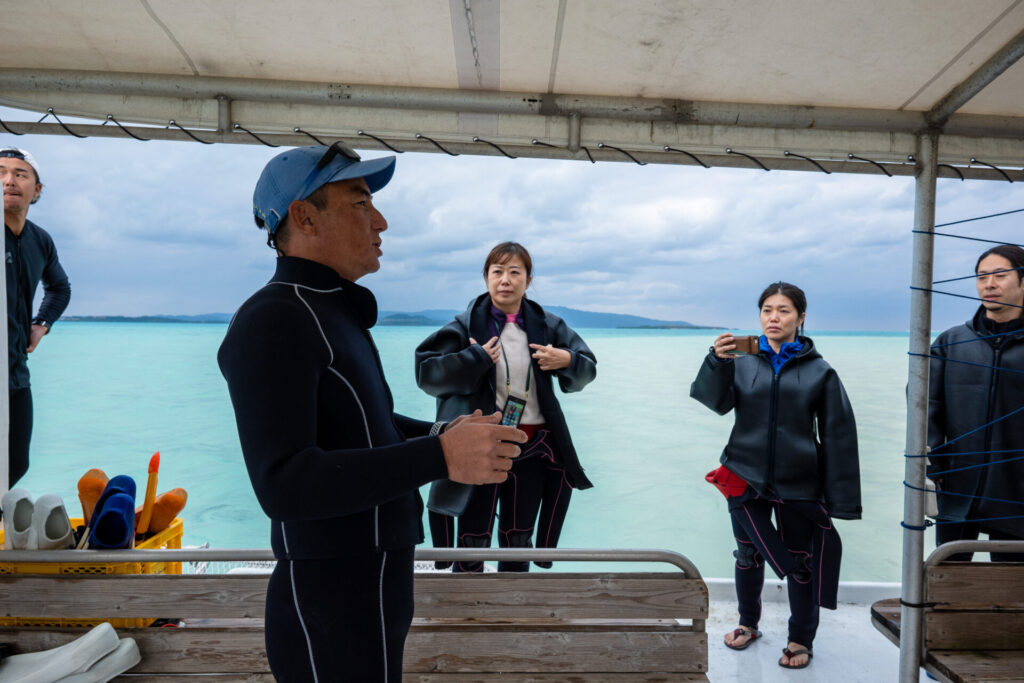
Maeda is currently the site manager at Sea Technico Corporation, a company his father, Hiroshi, started in 1987 on Kohama Island. The company primarily offers marine activities such as snorkeling, trial diving, and sunset cruising for tourists visiting from outside the island, allowing them to fully enjoy the beautiful ocean.
“I first visited this island as an elementary school student. Until then, I lived near Miho-no-Matsubara in Shizuoka City. My father was in the shipbuilding business there, but we moved to Okinawa’s main island when he switched from ‘building’ to ‘using’ as part of his business transformation.”
After spending 12 years in Okinawa until high school graduation, Maeda grew increasingly fascinated by the sea and began sailing competitions in his third year of elementary school, significantly influenced by his father, Hiroshi, who had a passion for yachts and competed in sailing. Soon after moving to Okinawa, Hiroshi embarked on developing an uninhabited island near Kohama Island, Kayama Island, during the bubble economy peak when developing uninhabited islands into resort islands was a popular venture. Since then, Maeda spent his long school holidays on Kohama Island, with the emerald green sea becoming a natural part of his life.
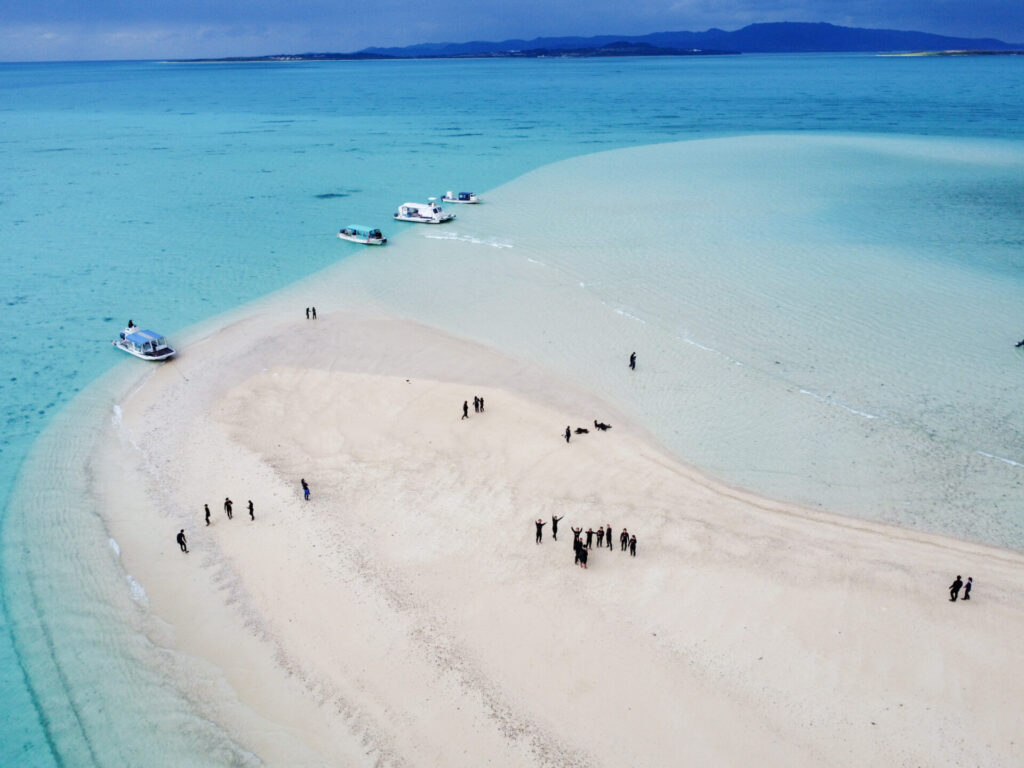
“I felt the need to know more about the sea to continue sailing, so I entered Tokai University’s School of Marine Science and Technology. Interestingly, the campus was located in Miho, where I spent my childhood, allowing me to live in the same place once again.”
During Maeda’s time at the university around 2000, shortly after the Kyoto Protocol was signed at the COP3 to combat global warming, discussions on the effects of global warming on the ocean were commonplace due to the nature of his studies.
“For the first time, I began to think deeply about the ‘Sekisei lagoon’ surrounding Kohama Island, a coral reef sea area that is rare and valuable on a global scale.”
The Coral Reefs Before My Eyes,
From Something Taken for Granted to Something to be Protected
The Sekisei lagoon, stretching between Ishigaki and Iriomote Islands in the Yaeyama Islands, is a coral reef area approximately 20km east to west and 15km north to south. It is formed by about 400 types of corals, making it the second most diverse after Australia’s Great Barrier Reef. Additionally, it is home to around 1,000 species of colorful fish and other creatures, creating a rich and diverse ecosystem.
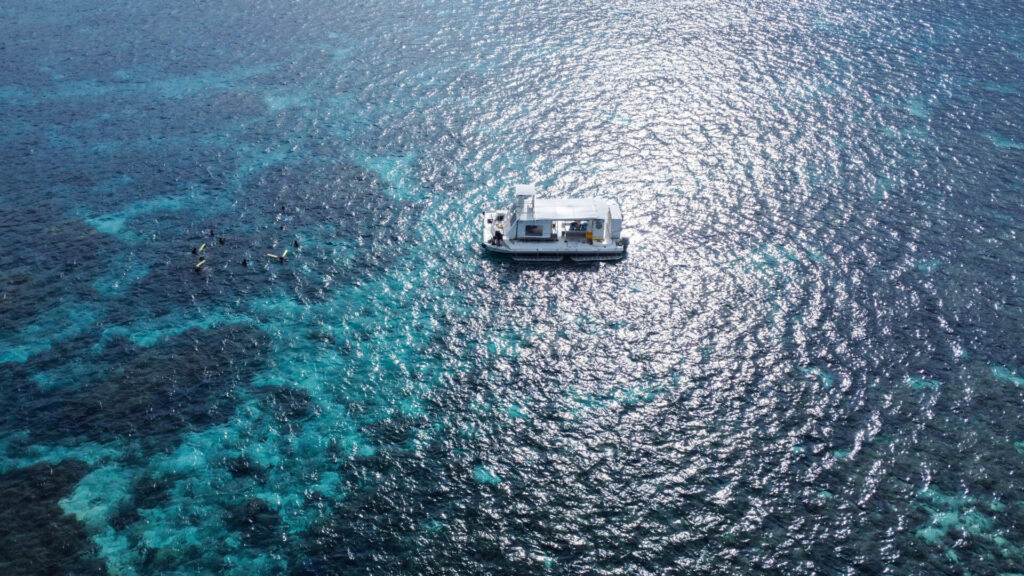
Furthermore, the coral reefs act as a natural breakwater, making the waters of the Sekisei lagoon extremely calm, resembling a large pool. With an average depth of about 8m, some areas are shallow enough to touch the coral, allowing close encounters with corals and marine life.
“However, for the people of the island, coral was not something special. The older generations thought of it almost like weeds that would grow back immediately.
But as global warming became recognized, people began to notice changes in the sea. Especially after the Sekisei lagoon gained academic value and worldwide attention, the atmosphere gradually shifted towards the need for protection. I learned a lot at university that made me realize this.”
Indeed, until around 2016, the coral coverage in the Sekisei lagoon was decreasing year by year. This was not only due to bleaching from global warming but also outbreaks of crown-of-thorns starfish and disease. However, changes in awareness and measures have led to a gradual increase in coral in some areas.
Seeing, Knowing, and Learning About the Sea
Starting with That to Protect the Sekisei Lagoon
After graduating, Maeda worked as a system engineer in the Kanto area for a while but One thing led him to make a U-turn to Kohama Island.
“In 2009, my father was about to embark on a round-the-world voyage on his yacht. I moved to Kohama Island with the intention of taking over my father’s business as I had always helped out during my breaks from school and after becoming a working adult.”
Most people would be surprised to hear of a yacht circumnavigating the globe, but the Maeda family is steeped in frontier spirit. It’s like riding a motorized motorcycle around Japan. For example, Maeda’s great-grandfather was a settler who helped develop the unexplored lands of Hokkaido as a colonist. This pioneering spirit continued through generations, including a cousin who worked for a major airline and completed a round-the-world trip in a Cessna.
“With thorough research and planning, sailing can be the most economical way to travel. A yacht propelled by wind doesn’t require fuel, and it has its own kitchen and living space. As long as you can cover food and maintenance costs, you’re ready to set off.”
With his father exploring the world’s seas, Maeda focused on his work at Sea Technico. To coexist with the beautiful seas and nature of the Yaeyama Islands, including the Sekisei lagoon, the company started new initiatives such as using underwater buoys instead of anchors to prevent damage to corals and avoiding repeated snorkeling in the same location to reduce the impact on corals. Additionally, they always provide opportunities for tour guests and school trip students to learn about the ongoing changes in the sea.
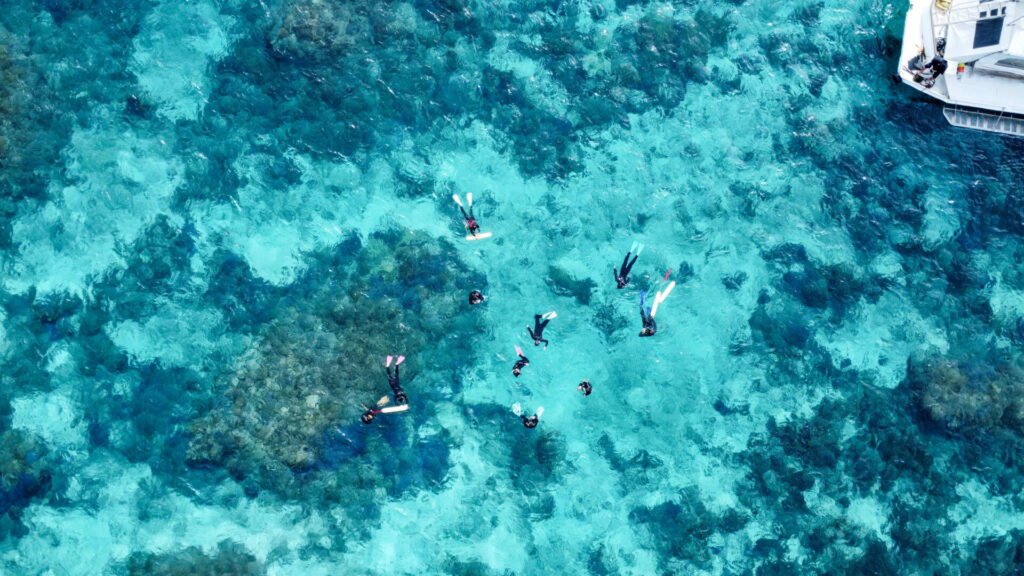
“You can see the color of the sea from a satellite, but you can’t understand what’s happening inside it unless you go into the sea yourself.”
Therefore, Maeda ensures that visitors see the sea for themselves and explains the consequences of coral death on the ecosystem. The disappearance of corals means fish lose their habitats, leading to the collapse of the ecosystem, which significantly impacts our food supply.
“Regarding coral and marine debris, what we can do is limited. We need to involve as many people as possible to make a significant impact. The first step is getting people to visit here.”
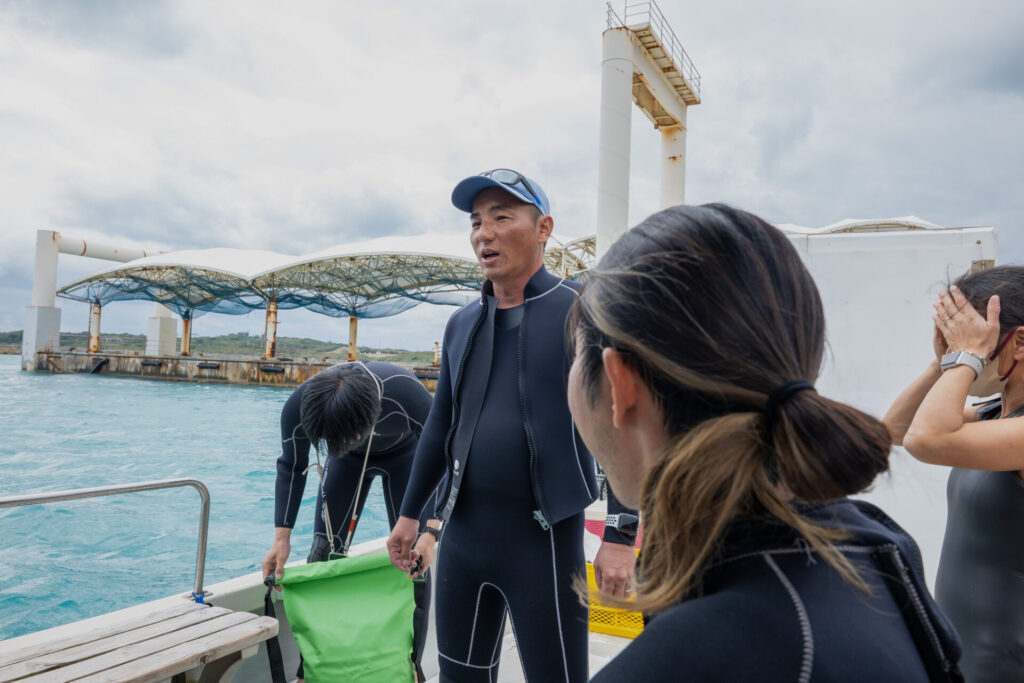
Sea Technico’s philosophy is clearly communicated to its visitors. For instance, wearing rash guards has become a common practice during tours in recent years. Previously, many people would expose their skin and use sunscreen, but once it was known that some ingredients could damage corals, people started opting not to use them. Carrying personal water bottles instead of buying plastic bottled drinks has also become more popular.
“Perhaps a global consciousness of living as Earthlings is spreading. It’s said that Japanese people are easily influenced, but it becomes the norm because many people engage in these practices.”
What to Change, What to Preserve
Visitors to Kohama Island, ranging from infants to people in their late eighties, enjoy marine activities, with a repeat customer rate of about 80%.
“Everyone who visits the island says there are ‘too many interesting things.’ Of course, there’s the sea, but people also enjoy cycling around the island and having barbecues at night. However, I hope they don’t spend their time here chasing schedules like in daily life but instead enjoy ‘doing nothing.'”
Sitting on the pure white sand, gazing at the clear sea stretching into the distance, watching the red sunset sink into the sea, and counting the shooting stars in the pitch-black night sky are experiences only possible when the mind is at peace. Only by surrendering to the slow flow of time on Kohama Island can one truly appreciate this unique healing.
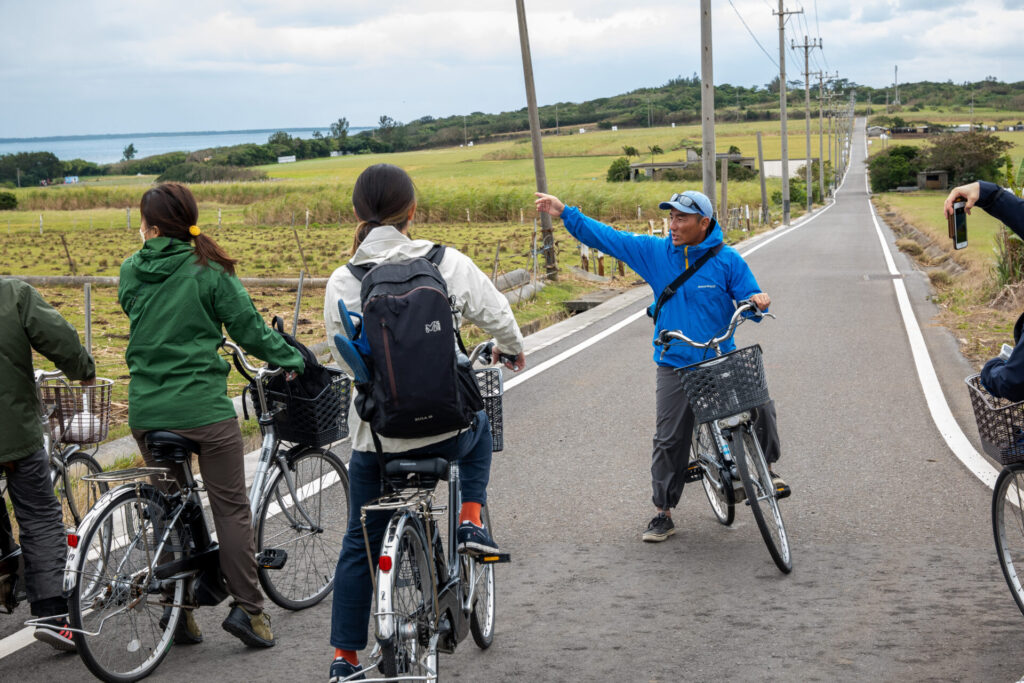
“I also hope visitors engage with the island’s people and culture. The island hosts festivals such as Kitsugan Festival and Tana Toui Festival, designated as national intangible cultural properties. People stop their work to practice for these festivals, embedding culture deeply into their lives. Work comes second because preserving these traditions is paramount. The energy and time people devote to festivals are immense.
Although I’m a settler, I want to help preserve the island’s culture as much as possible and protect what the islanders cherish.
With only elementary and middle schools on the island, many youths leave for high school. This inevitably leads to a shortage of successors, but if more people come to love the island and move here, the island’s potential could expand. If each person brings a skill, it could benefit the islanders and create new job opportunities.”
Tourism and livestock have been the pillars of Kohama Island’s economy, but Maeda sees hope in the expansion of job opportunities as more settlers arrive. This could also serve as a call back to those who have left the island.
“We plan to propose high-value-added travel experiences. Through marine activity experiences, we want to inform people about the current state of the sea and coral reefs and provide opportunities to learn how we can continue to protect them. At the same time, we want visitors to enjoy their time on the island.”
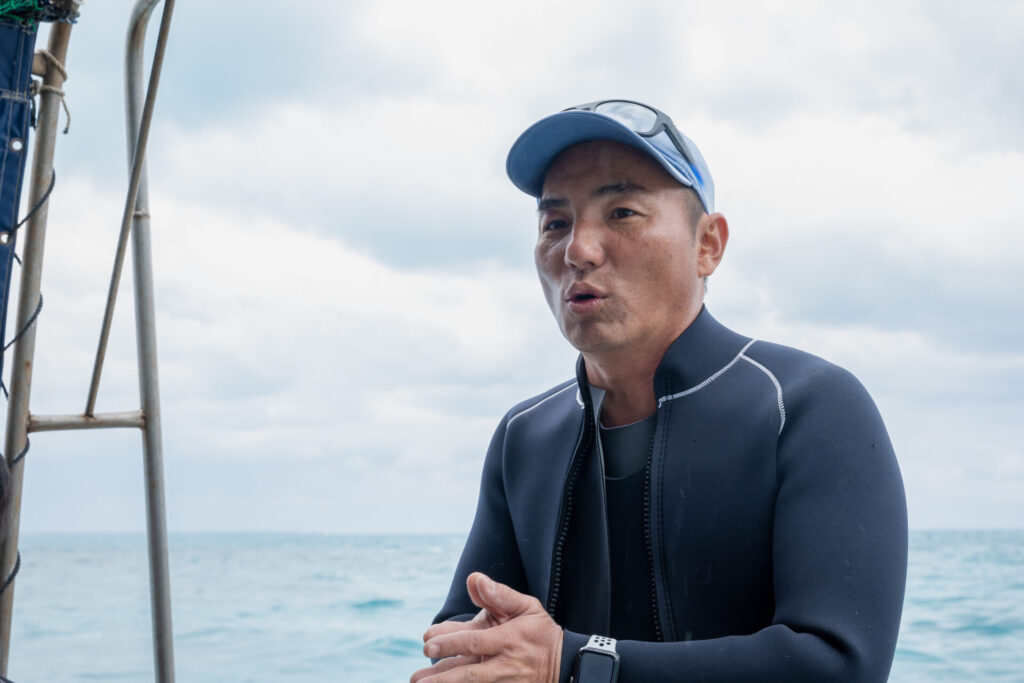
Finally, we asked Maeda about his feelings for Kohama Island and the sea.
“Kohama Island has hardly changed since I first visited 38 years ago. The only thing that’s changed is the brightness of the store’s fluorescent lights. If possible, I hope this island remains unchanged forever. On the other hand, we need to gradually change the sea to make it a more comfortable environment for corals. Perhaps that’s our mission as residents here.”
The challenge of changing and the difficulty of preserving are both fully understood, but Maeda speaks boldly, possibly driven by the pioneering spirit within him. When we witness the beauty of the sea and surrender to the island’s flow of time, we too can understand this sentiment.
